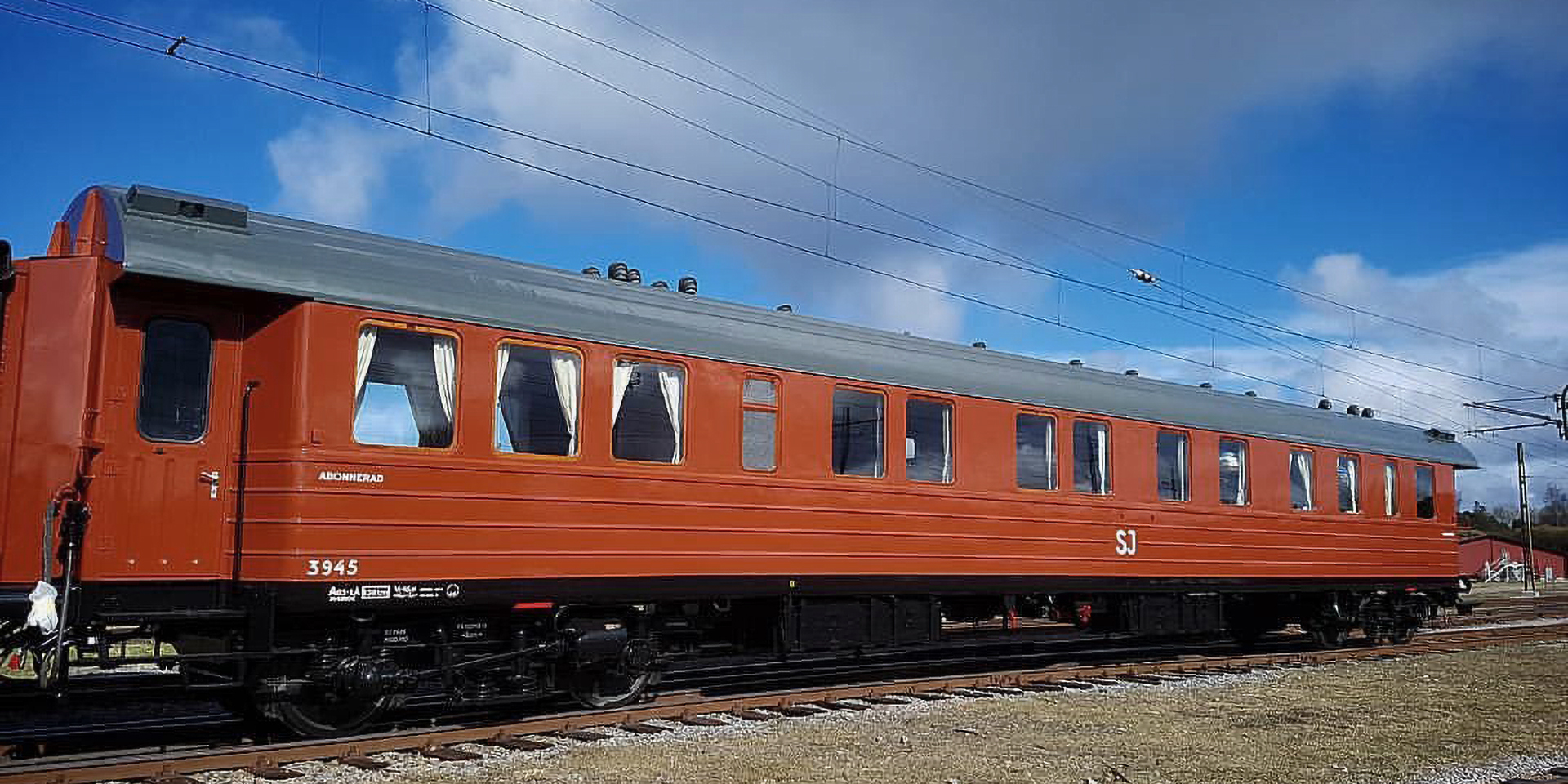
Sleeper carriage Ao3 3945
Sleeper carriage Ao3 3945 is popularly known as the DG carriage, as SJ ordered it to serve as a representative carriage for SJ’s Director-General and guests.
The carriage was lavish for its time. It had two large sleeping compartments with a large berth, four sleeping compartments with two berths, which were slightly wider and more luxurious than the standard ones, as well as a kitchenette, toilet and shower. There was also a saloon for meetings that included amenities such as a clock, speedometer and gramophone.
The carriage was also used as part of Dollartåget in the 1950s, at which time it served as a cinema, dance hall and post office. Dollartåget, “the Dollar Train”, was a luxury train that SJ ran to northern Sweden during the 1950s and 1960s in partnership with the Swedish Tourist Association (STF). The target group was Americans – hence the nickname.
SJ kept the carriage among its fleet of special carriages until 1995, when it came to the Swedish Railway Museum.
The interior of the carriage is relatively untouched, and the old-world charm and luxury is preserved in its walls. Today, the carriage is mainly used for the Swedish Railway Museum’s staff when travelling, but it is also available for charter. It is also possible to ask to eat in the DG’s saloon, which can be connected to the kitchen of the restaurant carriage. Towards the end of its time with SJ, the carriage was called the Troilius Carriage. It took this name from Carl Oskar Troilius, who was head of Statens Järnvägsbyggnader between 1863 and 1887.
Explanation
Ao3 is a type designation (class) of the wagon and means:
- A = 1-class wagon before 1956/special wagon
- o = Little bogginola = Bogie wagon
- 3 = Model 3 in the Ao family, which on these wagons meant that it was a special wagon among the 1-class wagons of the time
- 3945 is the wagon's unique identification number
Representation wagon Ao3 3945
Manufactured
KV, 1947
Length
24.1 metres
Weight
40 tonnes
Maximum permitted speed
130 km/h